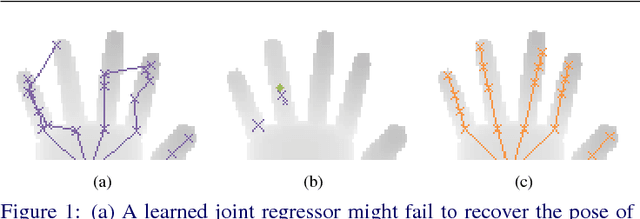Konstantinos Roditakis
Towards Practical Single-shot Motion Synthesis
Jun 04, 2024Abstract:Despite the recent advances in the so-called "cold start" generation from text prompts, their needs in data and computing resources, as well as the ambiguities around intellectual property and privacy concerns pose certain counterarguments for their utility. An interesting and relatively unexplored alternative has been the introduction of unconditional synthesis from a single sample, which has led to interesting generative applications. In this paper we focus on single-shot motion generation and more specifically on accelerating the training time of a Generative Adversarial Network (GAN). In particular, we tackle the challenge of GAN's equilibrium collapse when using mini-batch training by carefully annealing the weights of the loss functions that prevent mode collapse. Additionally, we perform statistical analysis in the generator and discriminator models to identify correlations between training stages and enable transfer learning. Our improved GAN achieves competitive quality and diversity on the Mixamo benchmark when compared to the original GAN architecture and a single-shot diffusion model, while being up to x6.8 faster in training time from the former and x1.75 from the latter. Finally, we demonstrate the ability of our improved GAN to mix and compose motion with a single forward pass. Project page available at https://moverseai.github.io/single-shot.
Hybrid One-Shot 3D Hand Pose Estimation by Exploiting Uncertainties
Oct 27, 2015

Abstract:Model-based approaches to 3D hand tracking have been shown to perform well in a wide range of scenarios. However, they require initialisation and cannot recover easily from tracking failures that occur due to fast hand motions. Data-driven approaches, on the other hand, can quickly deliver a solution, but the results often suffer from lower accuracy or missing anatomical validity compared to those obtained from model-based approaches. In this work we propose a hybrid approach for hand pose estimation from a single depth image. First, a learned regressor is employed to deliver multiple initial hypotheses for the 3D position of each hand joint. Subsequently, the kinematic parameters of a 3D hand model are found by deliberately exploiting the inherent uncertainty of the inferred joint proposals. This way, the method provides anatomically valid and accurate solutions without requiring manual initialisation or suffering from track losses. Quantitative results on several standard datasets demonstrate that the proposed method outperforms state-of-the-art representatives of the model-based, data-driven and hybrid paradigms.
 Add to Chrome
Add to Chrome Add to Firefox
Add to Firefox Add to Edge
Add to Edge